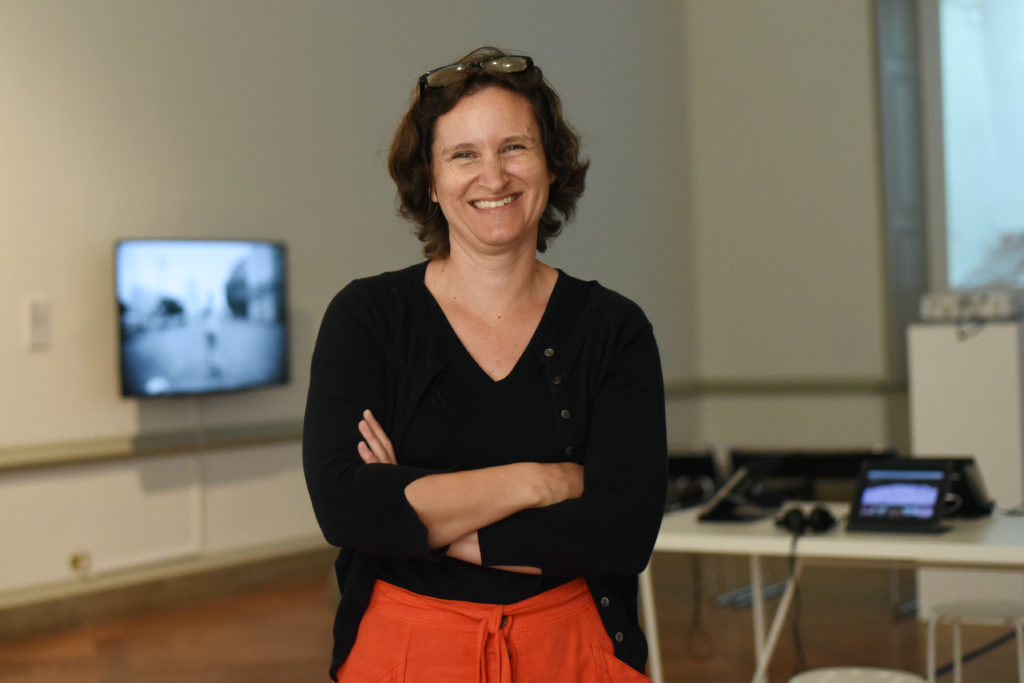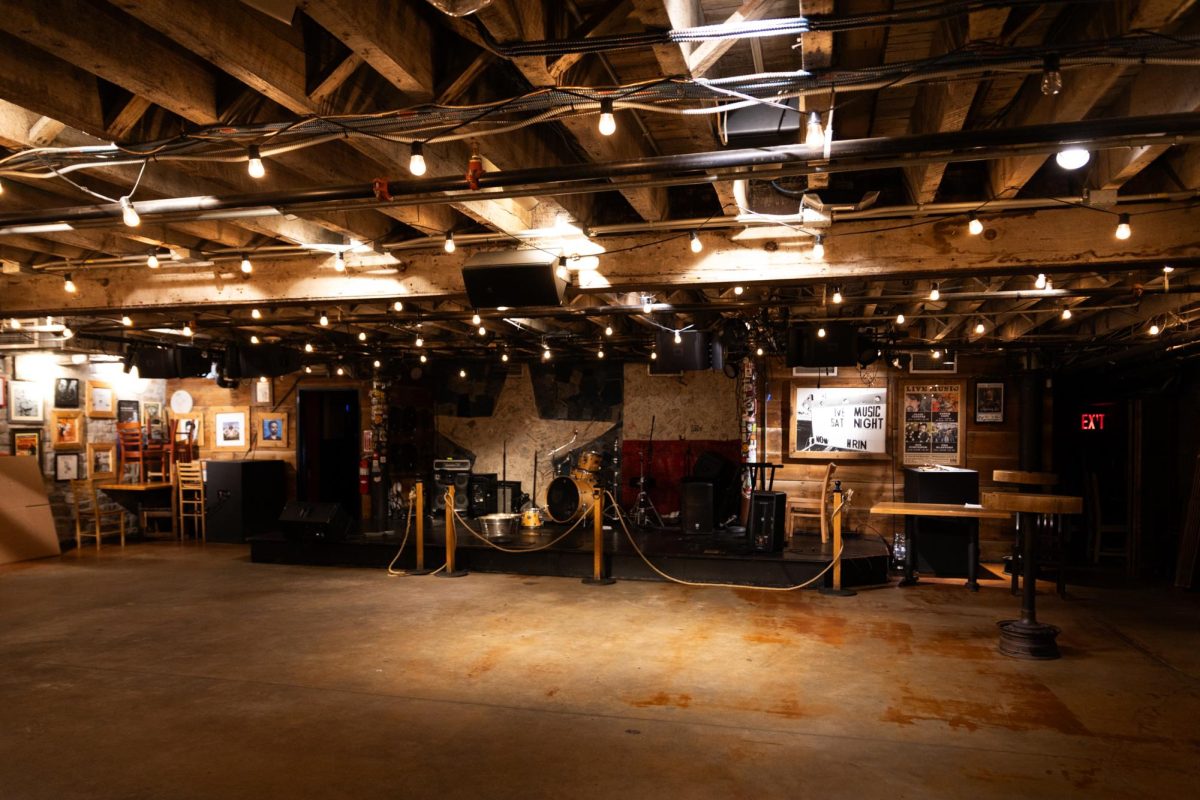Runway models, bold clothing and Vogue: the first images that come to mind when you think of the fashion industry. But if you’re talking about fast fashion, you’re in a different ballpark.
The exhibition “Fast Fashion/Slow Art” aims to spark conversation about the garment industry and its effect on labor and the environment through films and videos, its creators said. The exhibit, which is on display in the Corcoran School of the Arts and Design through Dec. 15, is co-curated by a University professor and an exhibit curator for the Smithsonian’s Hirshhorn Museum and Sculpture Garden.
“The hope is that because it’s art, it will attract some people that might not otherwise be thinking about these issues in this way,” said Bibiana Obler, an associate professor of art history who helped organize the exhibit.
Fast fashion is inexpensive, trendy clothing produced for a mass market and often thrown away after a fashion cycle is over, while slow fashion refers to clothing made for quality and longevity. Launched in early August, the Corcoran exhibit explores issues affecting the fashion industry, including poor labor conditions and the impact of clothing manufacturing on the environment.
The display incorporates the work from a group of emerging and well-known contemporary artists and filmmakers like Cat Mazza, Carole Frances Lung and Martha Rosler. Each film and video created from these artists scrutinizes the garment industry through artistic techniques like satire, deadpan humor, demonstrations and metaphor.
Videos in the exhibit range from a 15-hour video of a work day in a garment-processing facility in China to a short film depicting a girl walking through Berlin taking a series of white t-shirts off and throwing them on the ground.
The 11 video installations are on display in several formats, like old cathode ray tube televisions, flat screens and wall projections in separate viewing rooms. Audio of machines rumbling and voices reading from Vogue magazine fills the three-room exhibit.
Obler, the associate professor of art history, said the exhibition was years in the making, its beginnings starting prior to the opening of the Textile Museum in 2015. Obler said she and Phyllis Rosenzweig, a co-curator, wanted to collaborate with the Textile Museum on an exhibit, which sparked their idea for “Fast Fashion/Slow Art.”
She said she wants the exhibit to provoke a conversation about the fashion industry that does not “clobber” viewers over the head with overly depressing displays. She said she wants the installations to attract people and give people insight into issues facing the fashion industry through videos of actual people at work.
“This is a show that is trying to get people to think and to question assumptions, not just go to the exhibition and think, ‘Oh this is really cool, this is very beautiful’ and leave again,” Obler said. “But go there, and spend some time and then continue thinking about it once they have left.”
Obler said that the issue of sustainability in the garment industry has been of concern since the Industrial Revolution, when textile machines and factories were first introduced. Now, she said there is more attention paid to slow fashion to fix problems like waste and harsh labor conditions that fast fashion has created.
“It does feel like we’ve been riding this wave, even though we’ve been working on the show for several years, and a lot of the videos in the show are from several years ago,” Obler said.
Rosenzweig, the Hirshhorn Museum’s curator who helped put together the Corcoran exhibit, said artists approach issues like sustainability creatively to make people think about the way they impact the planet’s resources through the clothing they wear.
Advocates for slow fashion have pushed people to buy clothes from thrift stores or resale shops and donate unwanted clothing.
“I hadn’t thought about it much before working on this show, but now I feel aware that every stitch on the garment I am wearing was made by someone sitting at a machine for hours,” Rosenzweig said. “That overproduction and overconsumption of clothing nobody really needs creates a vast circle of waste, and that the fast fashion industry contributes to the pollution of our natural world.”
Zeina Mohammed and Kathryn Kline contributed reporting.







